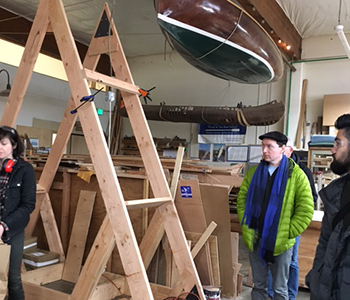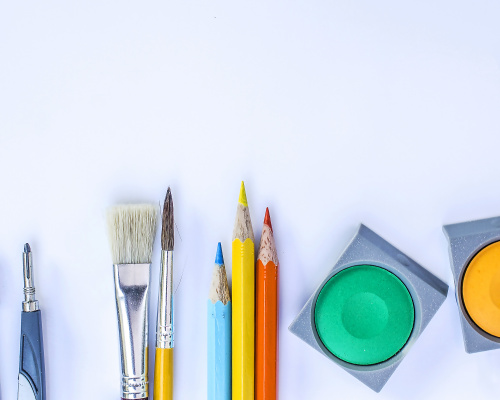A Tale of Two Makerspaces
Date
Makerspace: A space for makers. Simple, right? But defining a makerspace is more difficult than separating a compound word.
By providing access to tools, expertise, and opportunities for collaboration, makerspaces allow learners to experiment, tinker, and create. In an open-ended process, participants learn about themselves and about the world around them. However, because makerspaces flexibly adapt to the specific needs and interests of the communities they serve, each makerspace is unique, both in how it is set up and in how it operates.
ADX: A Community Makerspace

Recently, the Clarity content team took a field trip to ADX, a makerspace in SE Portland, for their free Wednesday morning tour. The facility is thriving, evidenced not only by the (often loud) sounds of a community at work, but also by the fact that ADX is in the midst of expanding into a newly-acquired warehouse next door.
Built on an ethos of sharing—shared tools, shared knowledge, and shared space—ADX is truly a community makerspace. The wide variety of tools in the fully-equipped woodshop, metal shop, and craft lab make practically any DIY project possible. An extensive list of courses simplifies getting started and learning new skills. A range of member ability levels from novice hobbyists to resident businesses to an in-house fabrication team ensures that everyone has access to expertise. All you need to get started making is an interest and an idea.
As inspiring as ADX is, I left the tour wondering whether such a makerspace would be possible in a school...
Makerspaces in schools are becoming increasingly trendy, yet face heftier challenges. First, they have to reach much larger populations. While ADX may have a few hundred members, a typical high school may have a few thousand. Second, schools are bound by adopted standards and have to be able to prove educational value.
PPS: School-based Makerspaces
Glennon Stratton, Makerspace Project Manager at Portland Public Schools (PPS), stopped by our office last week to share what PPS is doing with makerspaces . Thanks to the last school improvement bond, four schools—Franklin High School, Grant High School, Roosevelt High School and Faubion K-8—now include designated makerspaces filled with basic tools (i.e. hammers, scissors, and glue), advanced tools (i.e. CNC routers, laser cutters, and 3D printers), and a full time technician.
Classroom teachers are responsible for designing lessons that bring students into the makerspaces, instilling “making” as a more essential component of the core curriculum. PPS sees the shift to learning through hands-on projects as part of a larger shift in pedagogy towards more student-centered learning experiences. While lessons have to be aligned to standards, they are encouraged to be open-ended, giving students a chance to learn about the design process and think for themselves.
At ADX, individuals do much of the making, but in the new PPS makerspaces, students usually have to work in teams, simply because there are not enough tools to go around. However, the group work comes with intentional benefits, including increased opportunities to collaborate, problem solve, and learn what it means to be part of an effective team. Watch the video on the PPS Makerspace project page to see students in action.
Although ADX and PPS makerspaces take different forms and follow different operational procedures, a common spirit runs through both: through learning by doing, we can grow tangible skills alongside knowledge as we overcome challenges and foster our interests.
Makerspaces—whether community-based or school-based—flip the learning process upside down by shifting the onus of learning onto the learners themselves. Instead of learning through passive consumption, learners become active participants in the process.
Stratton quoted a PPS teacher responding to student pleas for help with, “I don’t know how to do that, but I know that it is possible. And I know that you can figure it out.” Instead of being given the answers, makers, both inside and outside of schools, have to discover the answers for themselves.

